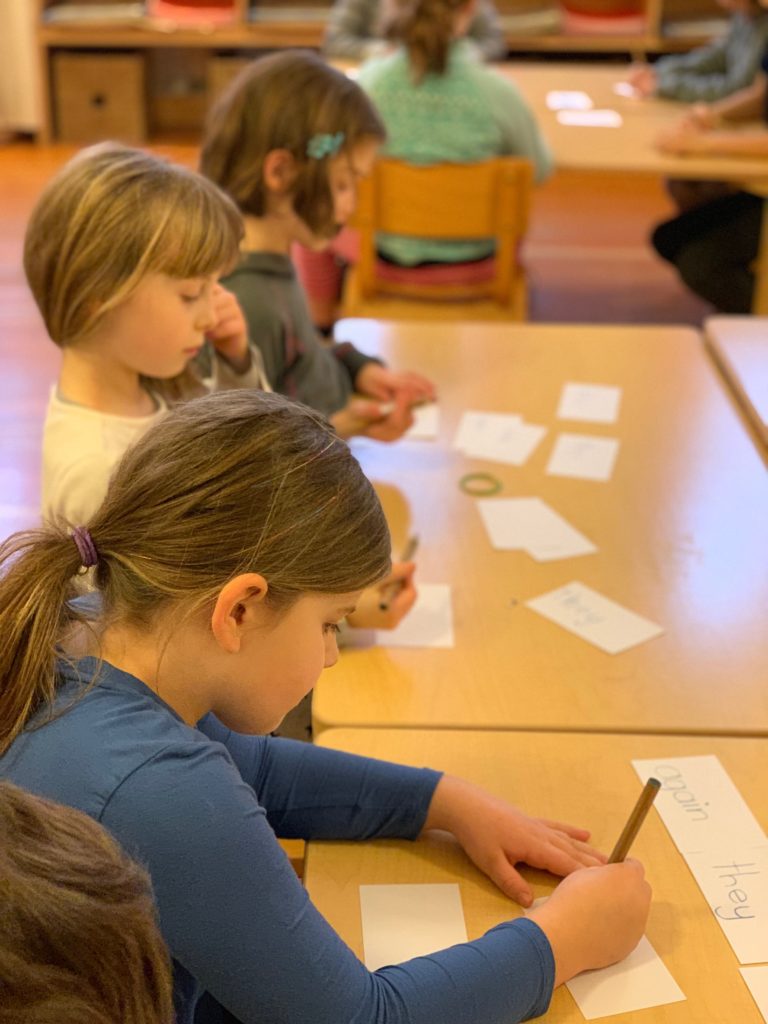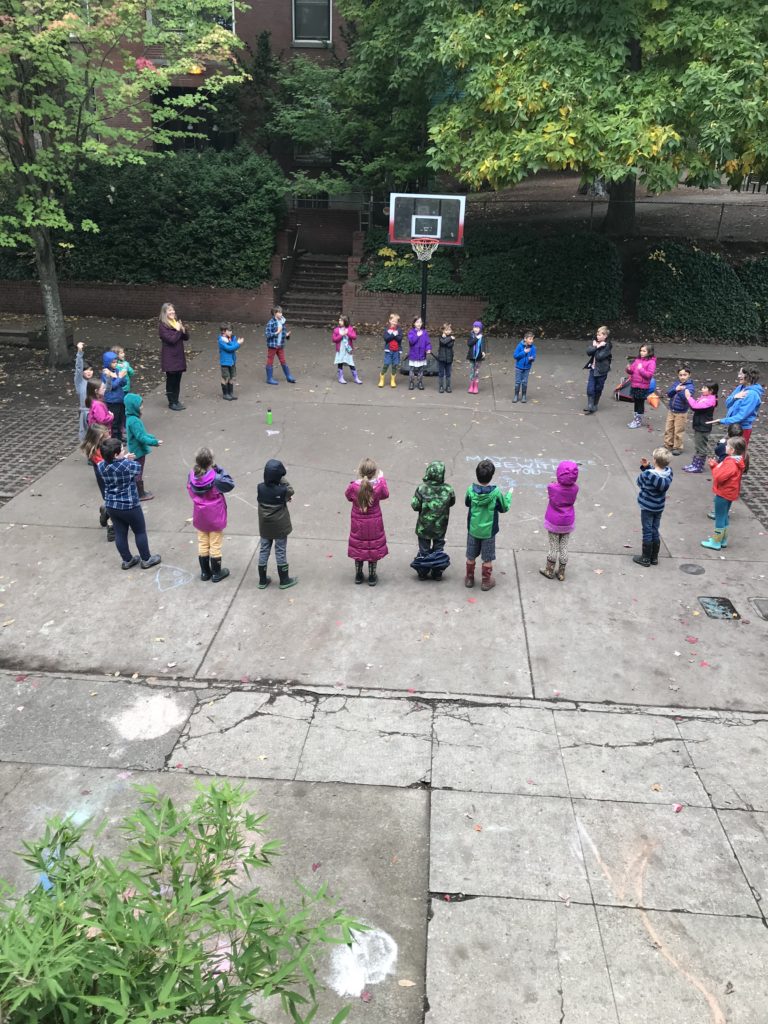I’m just two short weeks away from heading back to the classroom so it’s a perfect time to brush up on those Waldorf classroom management skills. To be honest, classroom management is the aspect of my teaching that has grown the most since those oh-so-difficult beginning teacher days, and boy am I glad I’ve learned a few things.
Interested in learning more about classroom management? Consider signing up for my Fall Productivity Course. The course begins on October 8 and classroom management is a huge focus. Click here to learn more about the course.
I’ve figured out that there are a few key reasons why our students might not be listening to us, which inevitably stresses us out and makes our classrooms a far cry from the peaceful Waldorf ideal.
1. You’re talking too much.
This is the number one reason I see students start to tune out their teachers. And believe me, I’m just as susceptible to it as you are. Think about how much of a given school day are you requiring your students to give you their undivided, listening attention. How much of that time is more about management than it is about direct instruction. Is that what our students really come to school for?
Make a solid effort to REDUCE the amount of time you spend speaking to your students as a group. You might still have plenty of individualized interactions with them, but those moments when you need to quiet the whole group so you can give instruction? Do less of it.
Make every moment that you’re speaking to the whole class all about TEACHING and less about MANAGING.
The way to do this is to have lots of rhythm and routine. Set up systems that are so solid they implement themselves. Students come into the classroom and they automatically know what to do. They naturally and seamlessly go from activity to activity without you talking to them about it.
Another strategy is to use non-verbal cues and signals to transition to different activities. Lots of Waldorf teachers use a glockenspiel or bell. Others turn the lights on or off to indicate the next activity. Find a non-verbal strategy that works for you and use it.
2. You repeat instructions several times.
Every now and then, over the course of the school year, I check in with myself and try to step outside myself and observe my teaching. Whenever I do, this is the biggest habit that I notice. Ugh. Gotta work on that one.
Here’s the thing, when your students know that you are just going to repeat those instructions again and again, they figure out that they don’t need to listen to you the first time. And you know what, they’re right!
But we easily fall into this habit because we are just so accustomed to speaking to the class and giving instructions. We do it constantly (see #1).

So, the way to change this habit is to frame it differently for yourself. Try to build the attitude that any time you are stopping to speak to the class it is an event. Imagine the town cryer calling out, “Hear ye, hear ye!” Roll out the figurative red carpet for yourself when you’re giving instructions. If you have the habit of making an event of the occasion every time you speak, you’re inclined to do it less.
Here are some ways you can make your instructions attention-grabbing events.
- Have a key phrase like “I have an important announcement.” Train your students to give eye contact whenever you use this key phrase.
- Use your non-verbal cue before speaking and wait for the classroom to be silent.
- Throw in an offhand commentary before you speak. I’ll often say, “OH, this is so important!” They naturally attend when they hear this.
3. You don’t follow through.
Okay, this one is all about what happens AFTER you give the instruction. So here’s the deal.
IF you have done everything to make sure that your students were listening when you gave those instructions, you have EVERY reason to expect that they will follow them. Too often, teachers get frustrated with students for not following instructions that they didn’t hear to begin with. My experience is that students generally want to do what is expected of them, so if they’re not, it’s usually a problem with communicating what those expectations are.
So here’s my not-so-secret strategy for following through. And it all has to do with what I do AFTER giving instructions. Now, this only works if you’ve followed the recommendations above. If you’re just spouting off instructions, without really thinking about it, your students aren’t going to hear them and you’re not really going to have the clarity of mind to consider the follow through.
- Stop and watch. After giving an instruction, pay attention to what your students are doing. Don’t get busy doing something else. Your sole task is to watch and see that students are following your instruction. (Eventually you’ll be able to know that they’ll follow through and you can go about your work, but this is practice.)
- Notice and acknowledge. As your students go about doing what you told them to do, verbally acknowledge students who are doing what you asked — and as you do it REPEAT THE EXPECTATION. “Oh, I see that Flora is quietly taking her pencil out and writing in her composition book.” “Henry is also quietly taking his pencil out and writing in his composition book.” This way students are getting recognized for doing the right thing and in the process others are hearing the expectation again. Now, I know, this is kind of cheating. Technically you’re repeating the instruction, but it doesn’t sound like it. I do this with three students before moving to the next step.
- Make corrections. Once you’ve done all of the steps above, you can move on to correct students who need it. By this time in the process, I’ve found it to be rare. Students feel good and want to be acknowledged for their good work. If you’ve got one or two who regularly need reminders at this point, you might consider developing a plan for those specific students.
4. You second-guess yourself or listen to students who second-guess you.
This was my biggest flaw when I was a beginning teacher. I had such high regard for my students, when they argued back with me about some instruction I gave, I listened to them!
Now I’m not saying that you need to have an attitude about it. “My way or the highway!” But if you are confident enough in what you are saying, your students won’t really argue.

I also work to build an attitude of the highest respect for teachers in my classroom. I remember one of my students a few years ago, whose parents had really cultivated a HIGH degree of respect for teachers made a comment to me that indicated he thought I knew absolutely everything. He said, “Well, you’re a teacher.”
I’ve held onto that memory, and the somewhat awestruck tone of voice he used when saying those words and tried to bring that attitude to my students. I bring it most when talking about my colleagues. I treat them with utmost respect so my students can see that I hold them in the absolute highest regard. I make off-hand comments like, “Well, Senora Michelle is the Spanish teacher. She’s an expert about Mexico.”
If one of my students tells me something that another teacher told them to do, or if I hear that there was a management issue in another class I say things like: “Well I hope you listened to her.” Or “You didn’t argue, did you? She’s a teacher.”
I have to know that demonstrating this respect for teachers trickles down to me and encourages my students to show me that same degree of respect.
Well there you have it. Some of my favorite strategies for encouraging my students to listen to me. Did you notice that most of these are about things I do? Not things my students do. Yep. When we look at what we can do we have the control. It’s totally in your power to make sure your students listen to you.
Want to read more about classroom management? I’ve written about it a lot. Click through to read more.
What are some of your favorite classroom management strategies. Leave them in the comments.





Great article! Very good information. I’ll be practicing this week